Chmod Command In Linux Example
It is also used to change special mode flags.

Chmod command in linux example. Below is a list of numerical permissions that can be set for the user, group, and everyone else on the. There are three basic modes to files and directories:. Chmod has two operating modes:.
For example, for read and write permission, it is 4+2 = 6. Using chmod command is very easy if you know what permissions you have to set on a file. Chmod Permissions for chmod 644.
Chmod command in UNIX and Linux allows modifying permissions not just on text format which is more readable but also on numeric format where combination of permissions are represented in octal format e.g. The Linux command to change permissions on a file or directory is chmod, which we like to read as change file mode. To recursively operate on all files and directories under a given directory, use the chmod command with the -R, (--recursive) option.
$ chmod o+x app.sh Change File Mode For All. Chmod command is used to change access permission of files and directories in Linux operating systems.chmod stands for change mode.Access permissions specify whether a user account or group can read, write, or execute a given file and directory. Chmod command practical example.
By using this command, we can set the read, write, and execute permissions for all three of the permission groups (Owner, Group and Other) in Linux. Chmod — Change the permissions of files or directories. The figure below shows an example to use ls -l and its output :.
For example, to change file permissions of a file file1.txt, to say rw-r--r-- execute:. Following example assigns execute privilege to user, group and others (basically anybody can execute this file). This command modifies Linux file permissions, which look complicated at first glance but are actually pretty simple once you know how they work.
The first step is to create a new text file with .sh extension using the following command. Let’s now delve and see different examples of chmod command. 4 – To give Read Permission 2 – To give Write Permission 1 – To give Execute Permission.
$ chmod a+x filename. In a previous article, we looked at how to manage file & directory ownership using the chown command. The general syntax to recursively change the file’s permissions is as follows:.
Deny execute permission to everyone. In this tutorial, we will discuss the basics of this command as well as provide examples explaining how it can be used in various scenarios. Chmod octal value file-name.
OR use the symbolic CHMOD Command:. Use --no-preserve-root to override this failsafe Linux Permissions Syntax. Let us take a look at above figure.
# alias chmod='chmod --preserve-root' and also add this to your /etc/bashrc or individual user's .bashrc file for permanent changes. To change permission using the Linux chmod command we have to follow some syntax and rules. Chmod Recursive # The chmod command allows you to change the permissions of files using symbolic or numeric mode.
Ls — List the contents of a directory or directories. In this examples we will enable group execution of file app.sh $ chmod g+x app.sh Change File Mode For Other. Chmod means ‘change mode’ and it changes file or directory mode bits (the way a file can be accessed).
You can do the same in symbolic mode. Linux chmod command is used to change the access permissions of files and directories. Others is special group which covers all users in a Linux system.
Use the octal CHMOD Command:. $ chmod a+r sample.txt Make a file readable and writable by the group and others. It is common to use the basic chmod command to change the permission of a single file.
In some cases we can see the +x without a. The syntax and the usage of scp command is similar to the cp command and you’ll see it shortly in these scp command examples. Chmod command in Linux is used to change or assign permissions on files and directories.
Verbose Changes Silent Default. In this article, you will learn how to change permissions of any file or directory with chmod command. The chmod command stands for change mode… and it’s used to limit access to resources….
If you want to check chmod command version then you need to use chmod --version command as shown below. More Information on. To use this method you have to remember below Rules and Numbers for proper use.
It is used to change the permission for files and folders. Linux chmod command is used to change access permissions of files and directories. It takes the following syntax:.
3 chmod Examples Give read, write and execute to everybody (user, group, and others) read, write and execute = 4 + 2 + 1 = 7. Last columns of owner, group, others shows individual octal values and actual bit set on file as seen by ls -l. We can enable the execution right of the all users in a file with o like below.
In this tutorial, we look at the chmod. The name is an abbreviation of change mode. In this file example, sets read and write permissions for user and group:.
File/Directory permission is either Read or Write or executable for either user or group or others. Even, it ignores the symbolic links come across recursive directory traversal. Example 1) Assign permissions using numeric notation.
But first let’s take a look at the syntax of scp command:. However, you may need to modify the permission recursively for all files within a directory. Vijay Bhaskar 10/10/12 1 Comments Chmod (change mode) is one of the most frequently used commands in unix or linux operating system.
For example, if you want the owner to have all the permissions and no permissions for the group and public, you need to set the permission 700 in absolute mode:. Basic “chmod” Command examples in Linux. Give the members of the group permission to read the file, but not to write and execute it:.
After that, you will be able to run it without using the sh or bash commands. The command chmod a+rwx is equivalent to chmod ugo+rwx. Types of permissions which we will be changing using chmod command :.
This is illustrated in the calculation below. Linux Operating System- sudo, su and chmod commands. Control who can access files, search directories, and run scripts using the Linux’s chmod command.
These permissions are given to file/folder to provide a secure environment to the OS, efficient management of a file and high-level access to the users accessing the files/ folders. This section provide description about sudo command, su command and chmod command, with the help of these commands you can give/take permission of files(s)/directory(s). Unix/Linux chmod command examples to Change File Permissions.
$ chmod OPTIONS MODE filename Only the root user or a regular user with sudo privileges can change file or directory permissions. Depending on the origin of the file to be copied, the source can either be client or server. Linux chown command help and information with chown examples, syntax, related commands, and steps on how to use chown from the command line.
In Unix and Unix-like operating systems, chmod is the command and system call which is used to change the access permissions of file system objects (files and directories). For detailed online information about the `chmod' command, enter. The chmod command in Linux is used to change file and directory permissions using either text (symbolic) or numeric (octal) notation.
It’s a same as using your mouse to right-click a file or folder and selecting the permission tabs and. How to check chmod command version. Chmod command is useful to change permission for Files and folders in Linux/Unix.
Creating a Bash File. The chmod command is used to change the file or directory access permissions. Chmod u+rw,g+r,o+r Filename Numerical Way :.
Extra chmod command options. We have already described the Linux file permissions. $ sudo chmod OPTIONS numeric_value filename.
To have combination of permissions, add required numbers. In Linux / Unix systems, accessibility to files and directories is determined by file ownership and permissions. Chmod Linux command Syntax.
Make permission for a file same as another file (using reference) If you want to change a file permission same as another file, use the reference option as shown below. First column shows the chmod command , second column shows how the value is calculated for the permission. Chmod command or “change mode command”, and as that name implies, the chmod command is used to change the mode of Unix/Linux files.In other words its used to define the way a file can be accessed.
(user) rw- = 4+2+0 = 6 (group) r -- = 4+0+0 = 4 (others)r -- = 4+0+0 = 4. The request is filtered by the umask. In this tutorial, I am going through the steps to create a bash script and to make the script executable using the chmod command.
Now run following commands to see how chmod command changes permission type in supplied level (as first argument). In such cases, the chmod recursive option (-R or --recursive) sets the permission for a directory (and the files it contains). It is possible to use these features on directories of all levels and all files within those directories, individually or as a group.
Chmod go-rx ~ As you can see, a + sign used with `chmod' adds accessibility and a - sign takes it away. The letter a is a shortcut to assign permissions to all users. How to Use the chmod Command in Linux Command Syntax.
Chmod -R 644 folder_name. The numeric value can take 3 or 4 numbers. Repulsively remove the write permission for other users:.
Recursive Preserve-Root Reference File. $ chmod u+x samplescript.sh. The chmod command A normal consequence of applying strict file permissions, and sometimes a nuisance, is that access rights will need to be changed for all kinds of reasons.
Id — Display group IDs. We use the chmod command to do this, and eventually to chmod has become an almost acceptable English verb, meaning the changing of the access mode of a file. The syntax for changing the file permission recursively is:.
Do not change the permissions for the group, or for others. Now if we use chmod, it does not allow to modify root permission # chmod -c --recursive 755 / chmod:. Chmod -R a+rwx,u-x,g-wx,o-wx folder_name.
Several symbolic methods are equivalent;. One example is chmod u=rwx,go=rx,o+t. It stands for change mode.
$ chmod ug=rw /var/www/html/data.php See “how to use change user rights using chomod command” for more information. Therefore, when setting permissions, you are assigning them for "yourself", "your group" and "everyone else" in the world. $ chmod a-x sample.txt Allow read permission to everyone.
We explained the chown and chmod command for Linux and Unix users. Below are some examples of how to use the chmod command in symbolic mode:. $ chmod 777 file.txt (or) $ chmod ugo+rwx file.txt Give execute privilege to user.
In this quick tutorial, we will see how we can use chmod command in an Ubuntu machine to find, modify and remove user permissions from specific files which exist on the user’s file system. Change the permissions for the owner of example.jpg so that the owner may read and write the file. Remove the execute permission for all users:.
The first 7 sets the permissions for the user, the second 7 sets the permissions for the group, and. Chmod -R o-w dirname. In Linux, you will often need to make use of the chmod command.
You can use chmod in the command line to change file or directory permissions on unix or unix-like systems such as linux or BSD. Chmod examples using octal mode :. What is chmod Linux command.
A step-by-step guide with Video Tutorials, Commands, Screenshots, Questions, Discussion forums on chmod Command in Linux with Examples | LinuxHelp | chmod command means change mode.chmod is used to alter the permission of files and folders. It is dangerous to operate recursively on '/' chmod:. Now if you write down 1 st digit in binary format it will be written as 111 on which 1 st digit is for read.
Setuid Setgid Sticky Bit. In Linux/Unix like operating system, the chmod command is used to change the access mode of a file. Scp <options> source_path destination_path.
The command is relatively simple to use and involves using. When setting permissions using the numeric style/notation, use the syntax shown below:. Chmod stands for “Change Mode” and is used to modify the permissions of files and directories in a Linux based system.
Like many other Linux commands, chmod has a recursive argument, -R, which allows you to operate on a directory and its contents. When using chmod, you need to be aware that there are three types of Linux users that you are setting permissions for. The chmod command is used to define or change permissioins or modes on files and limit access to only those who are allowed access… It changes the mode of each FILE to MODE….
Create a test file named test-file and note down its default permission. $ chmod go+rw sample.txt Make a shell script executable by the user/owner. 40 Best Examples of Find Command in Linux.
The chmod command in Linux/Unix is abbreviated as CH ange MOD e. To know about the access permissions of a file or directory, use the ls -l command as shown below:. If you are new to Linux, and are looking for a way to change file/directory permissions through the command line, you'll be glad to know there exists a command - dubbed chmod - that lets you easily do this.
However, in most cases, 3 numbers are used. It can not change the permission of symbolic links. For Example, if you want to give Read & Write permission to User/Owner and Read permission to Group & Others using Alphabetical way then the command would be:.
As you can see from below output current chmod version is 8.22. In linux terminal, to see all the permissions to different files, type ls -l command which lists the files in the working directory in long format. 777 where first digit is for user, second is for group and 3 rd is for others.

How To Use Chmod Command In Linux Explained With Examples
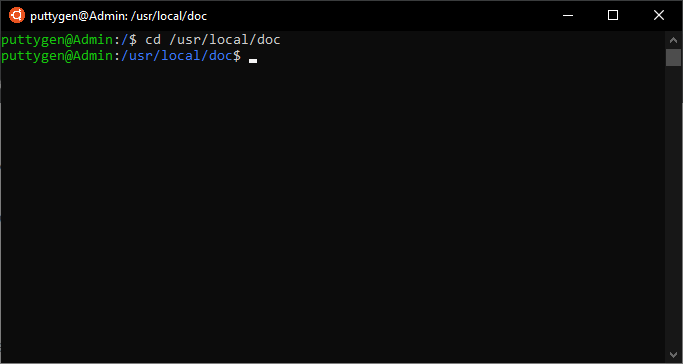
Top 50 Linux Commands With Example

Learning The Shell Lesson 9 Permissions
Chmod Command In Linux Example のギャラリー

Chmod Command Examples In Unix Linux Lpi Central

8 Linux Chmod Command Examples To Understand It The Linux Juggernaut

Chmod 777 In Terminal The Command To Make All Changes Affect Every File And Folder Ask Ubuntu

Modify File Permissions With Chmod Linode

Umask Wikipedia
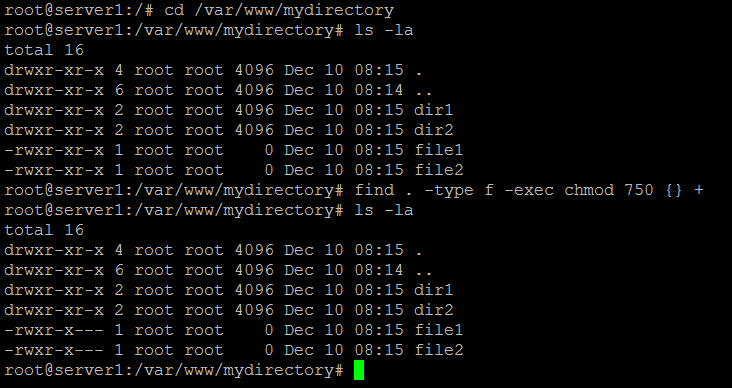
How To Chmod Files Only On Linux
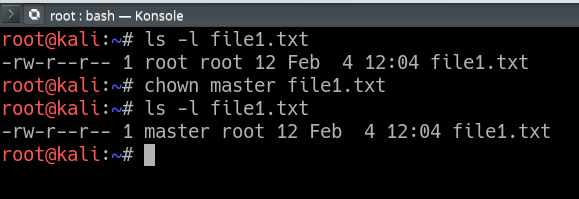
Chown Command In Linux With Examples Geeksforgeeks

Change File And Folder Permission On Ubuntu Chmod Chown Command In Linux Youtube

Linux File Permissions Complete Guide Devconnected

Linux Chmod Chown Syntax And Chmod Chown Examples

Chmod 777 What Does It Really Mean Make Tech Easier

Linux Chmod Command Help And Examples

Basic Commands In Kali Linux Learn Penetration Testing

How To Create Write A Simple Sample Linux Shell Bash Script 5 Steps Instructables

Linux And Unix Chmod Command Tutorial And Examples Xsofthost
Q Tbn 3aand9gcr2lfpzbutqythmvbwafnxvyggqfj7hnw6fhh Kcozkk8m5 V7o Usqp Cau

Chmod Command In Unix Unix File Permissions Chmod With Examples Chwn Command Chgrp Command Unmask

Introduction To Linux File Permissions Attributes Chmod Globo Tech
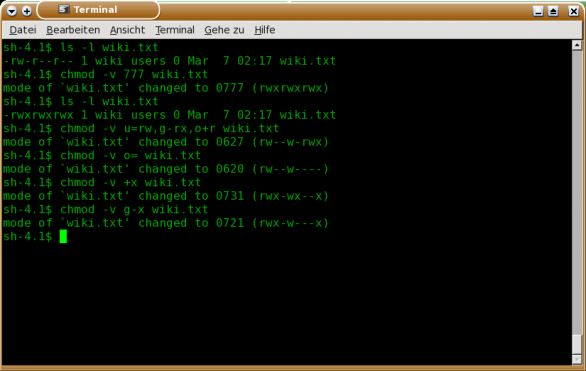
Chmod Shortcuts For Linux
.png)
File Permissions In Linux Unix With Example

How To Use Chmod And Chown Command In Linux
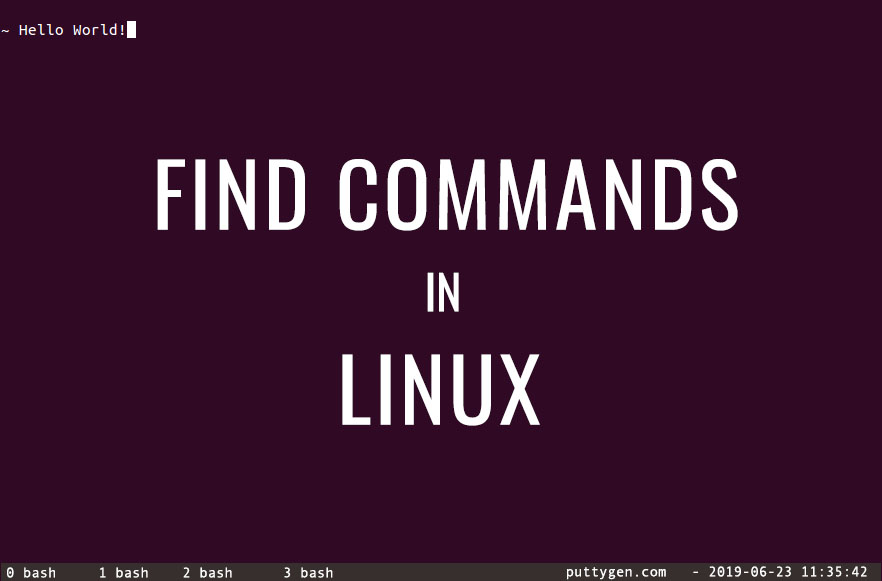
30 Find Command In Linux With Examples

Linux Terminal File Permissions Chmod Chown And Chgrp Youtube

Linux Chmod Chown Syntax And Chmod Chown Examples

Best Linux Chmod Command With Examples
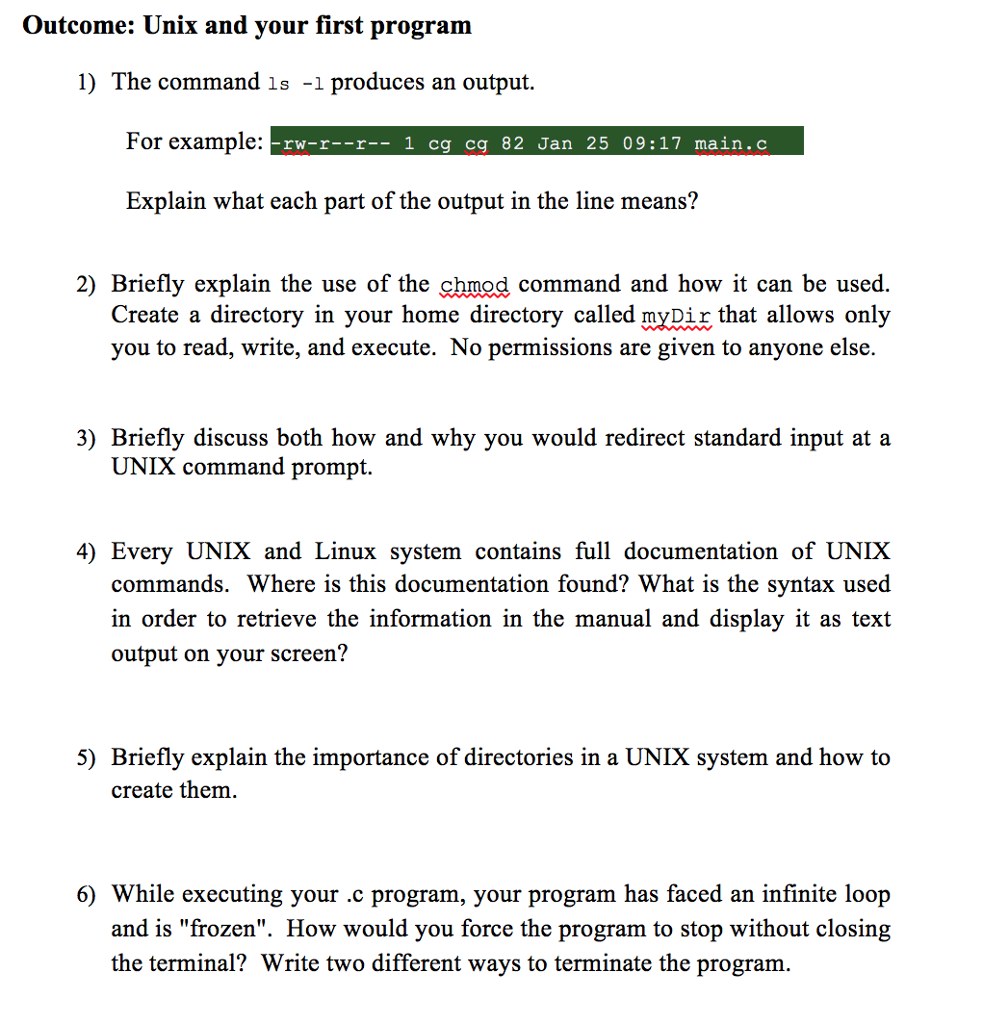
Solved Outcome Unix And Your First Program 1 The Comman Chegg Com
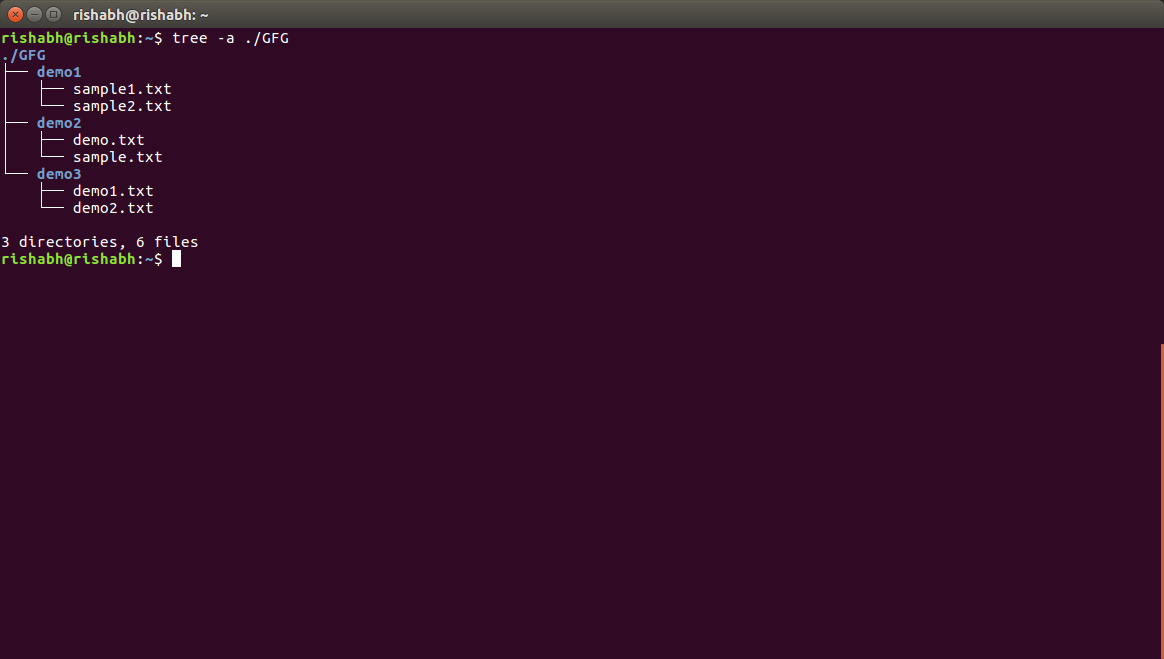
Tree Command In Linux With Examples Geeksforgeeks

How To Use Chmod Command In Linux Explained With Examples

An Introduction To Linux File Permissions Boolean World

Understanding Linux Permissions And Chmod Usage
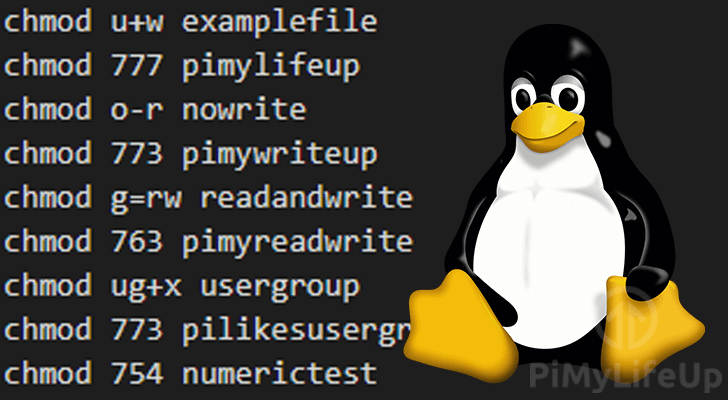
The Basics Of The Chmod Command Pi My Life Up

How To Copy File Permissions And Ownership To Another File In Linux

Chmod Command In Linux With Examples Geeksforgeeks
Q Tbn 3aand9gcs Trmaopb41lzfo2wl Mi6olorurkywaddbudhnw Ne1mor3ct Usqp Cau

8 Linux Chmod Command Examples To Understand It The Linux Juggernaut

Your Own Linux Chmod Basics Of Files Directories Permissions And Use Of Chmod

9 Quick Chmod Command Examples In Linux

Linux Chmod Chown Syntax And Chmod Chown Examples
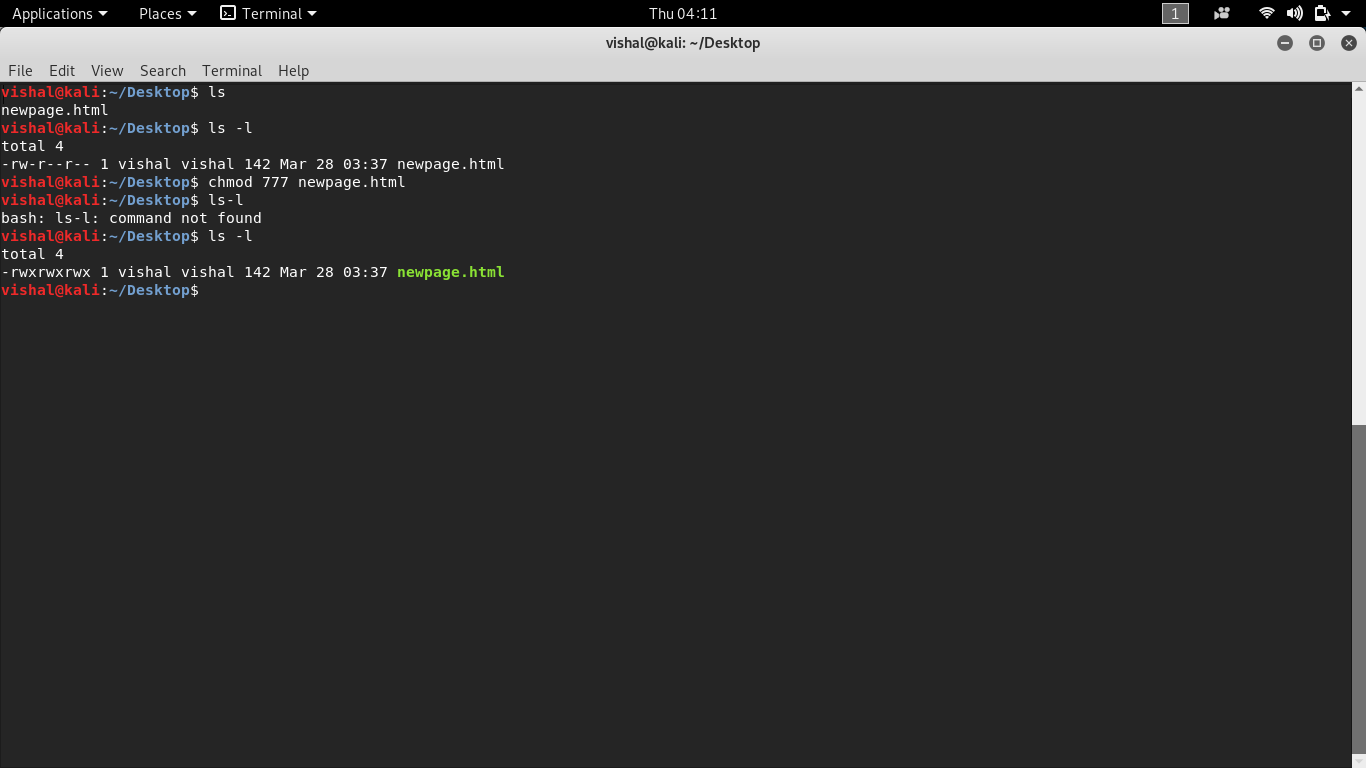
Unix Commands Basic To Advanced Unix Commands With Example
Your Own Linux Chmod Basics Of Files Directories Permissions And Use Of Chmod

How To Use Chmod Command In Linux Explained With Examples

Chown Command In Linux With Examples Geeksforgeeks
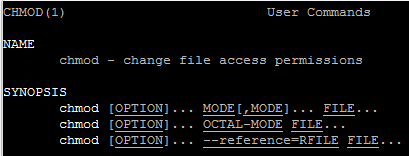
Chmod Command In Linux Alien Coders
.png)
File Permissions In Linux Unix With Example

How To Get And Install Linux Games Full Tutorial A K A Everything You Wanted To Know About Linux Games
How To Create A Read Only File In Your Home Directory In Unix Quora

Linux Chmod Command Linuxfordevices

How To Use The Chmod Command On Ubuntu 16 04 18 04 With Examples Website For Students

Linux Chmod Example Linux Hint
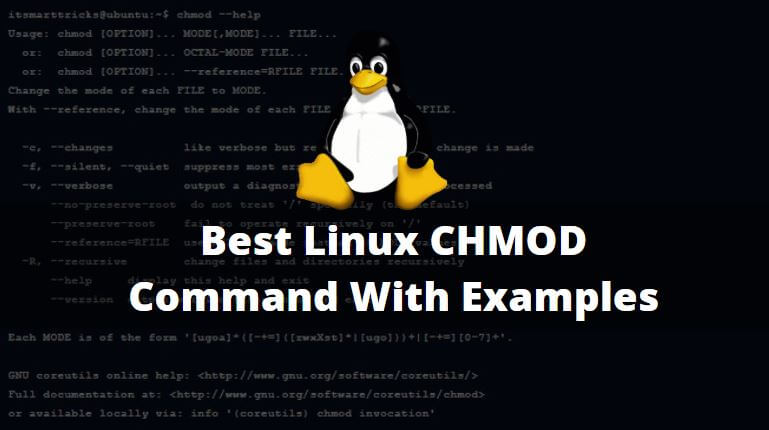
Best Linux Chmod Command With Examples It Smart Tricks
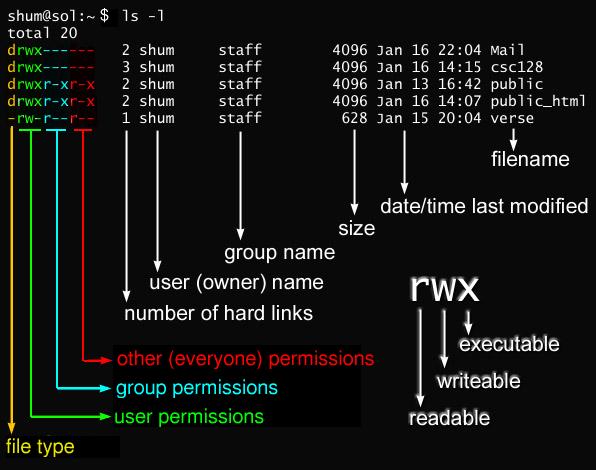
Javarevisited 10 Example Of Chmod Command In Unix Linux

Linux File Permission Javatpoint

Chmod Wikipedia
Playing With Linux And Sql Chmod Command Usage And Example

Chmod Recursive Change Permissions Recursively On Files Folders

Chmod Recursive Change Permissions Recursively On Files Folders
:max_bytes(150000):strip_icc()/i7guGwCYcn-34e068e148ae4e918b29c86cd2d5740e.png)
Configuring Unix Linux File And Directory Access Rights

Linux Commands Chmod Cloudaffaire

How To Run Sh File In Linux How To Use Linux

Pin By Dr Stefan Gruenwald On Cheatsheets Computer Science Programming Learn Javascript Linux Operating System

How To Use The Chmod Command On Linux

Understanding Basic File Permissions And Ownership In Linux The Geek Diary
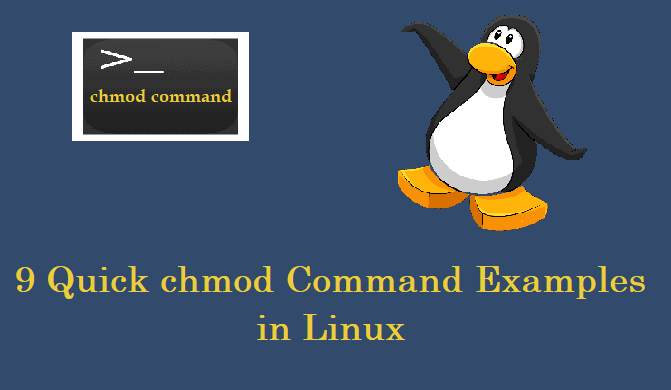
9 Quick Chmod Command Examples In Linux
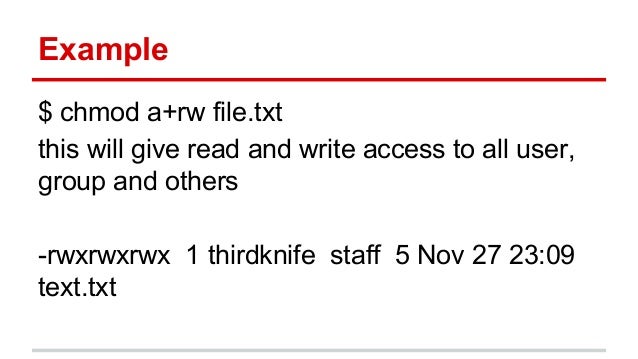
Give Write Access Chmod Command
Your Own Linux Chmod Basics Of Files Directories Permissions And Use Of Chmod

Numeric Permissions Table Linux Chmod Command Linux Permissions
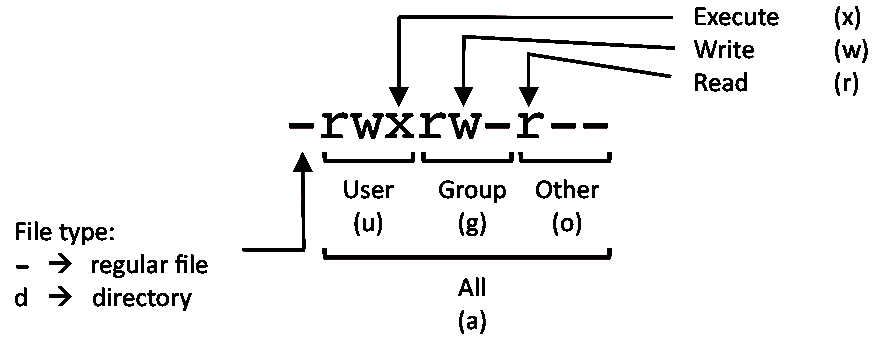
Linux Commands Cheat Sheet Linux Training Academy

Introduction To Linux File Permissions Attributes Chmod Globo Tech

Chmod Chown Wsl Improvements Windows Command Line
Q Tbn 3aand9gcq1nsq3kxri7ryrifobs2rfobawbv4hezfw9 Ldf4feblahyn09 Usqp Cau

How To Run A Script In Linux Nixcraft

Chmod Command In Linux With Examples Geeksforgeeks
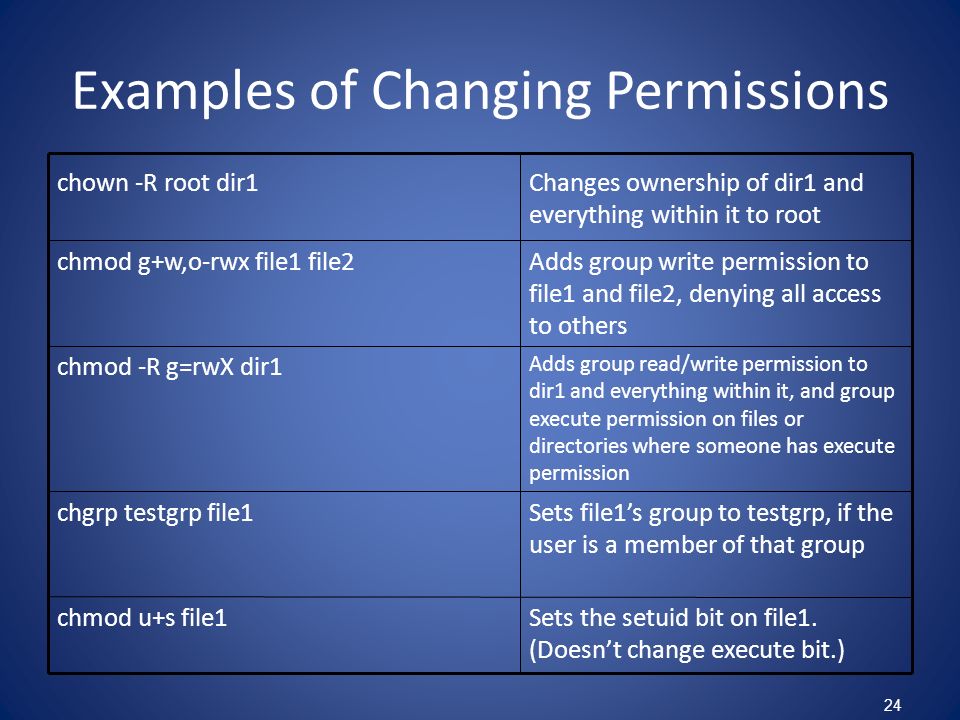
Permissions Why Use Chmod Instead Of Chmod U Rw Go R Unix Linux Stack Exchange
/GettyImages-1021092796-ea8c63ee76f84bd5bf98c4222337fbb4.jpg)
How To Use The Chmod Command In Linux

Linux Chmod Command Tutorial With Examples To Change Permission Of Files And Folders Poftut

Chmod 777 Or 755 Learn To Use Chmod Command With Examples
.png)
File Permissions In Linux Unix With Example

Linux File Permissions Tutorial How To View And Change Permission
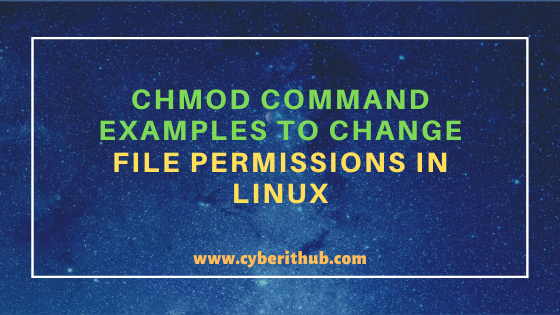
11 Popular Unix Linux Chmod Command Examples To Change File Permissions Cyberithub

How To Use Chmod And Chown Command Nixcraft

Linux Unix Changing Permissions With Chmod Vinish Kapoor S Blog

Chmod Recursive Change Permissions Recursively On Files Folders

Chmod Command In Unix Learn Unix Online Fresh2refresh Com
Q Tbn 3aand9gcs J72hjomdluhqe6xjivy M6yrjmkqx9x3z3ps Rpnb8by3w7z Usqp Cau

Chmod Command In Linux With Examples Geeksforgeeks

Linux Chmod Command Clearly Explained Codedodle

Umask Wikipedia

Linux Chmod Command Linuxfordevices

Chmod Command In Linux File Permissions Linuxize

Permissions In Linux Geeksforgeeks

How To Use Chmod Command In Linux Explained With Examples

Linux Chmod Command Utility Software Computer File

Chmod Recursive Change Permissions Recursively On Files Folders

Explained How To Use Chmod Command Complete Guide Youtube

Understanding Linux Permissions And Chmod Usage

Linux Ftp Command Examples
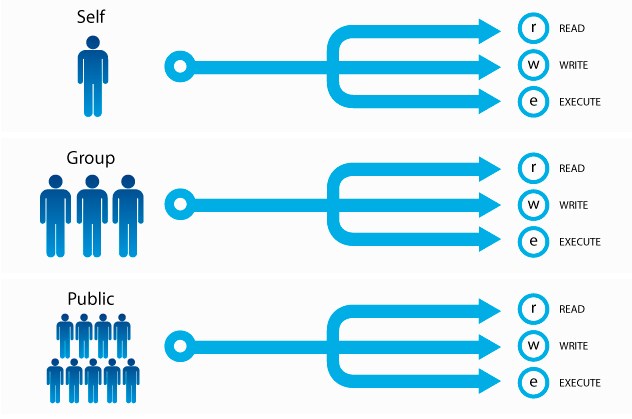
7 Examples Of Command Chmod On Linux And Explanation

Permissions In Linux Geeksforgeeks

How To Use The Chmod Command On Linux

How To Use Chmod Command In Linux Explained With Examples

How To Use Chmod Command In Linux Explained With Examples




